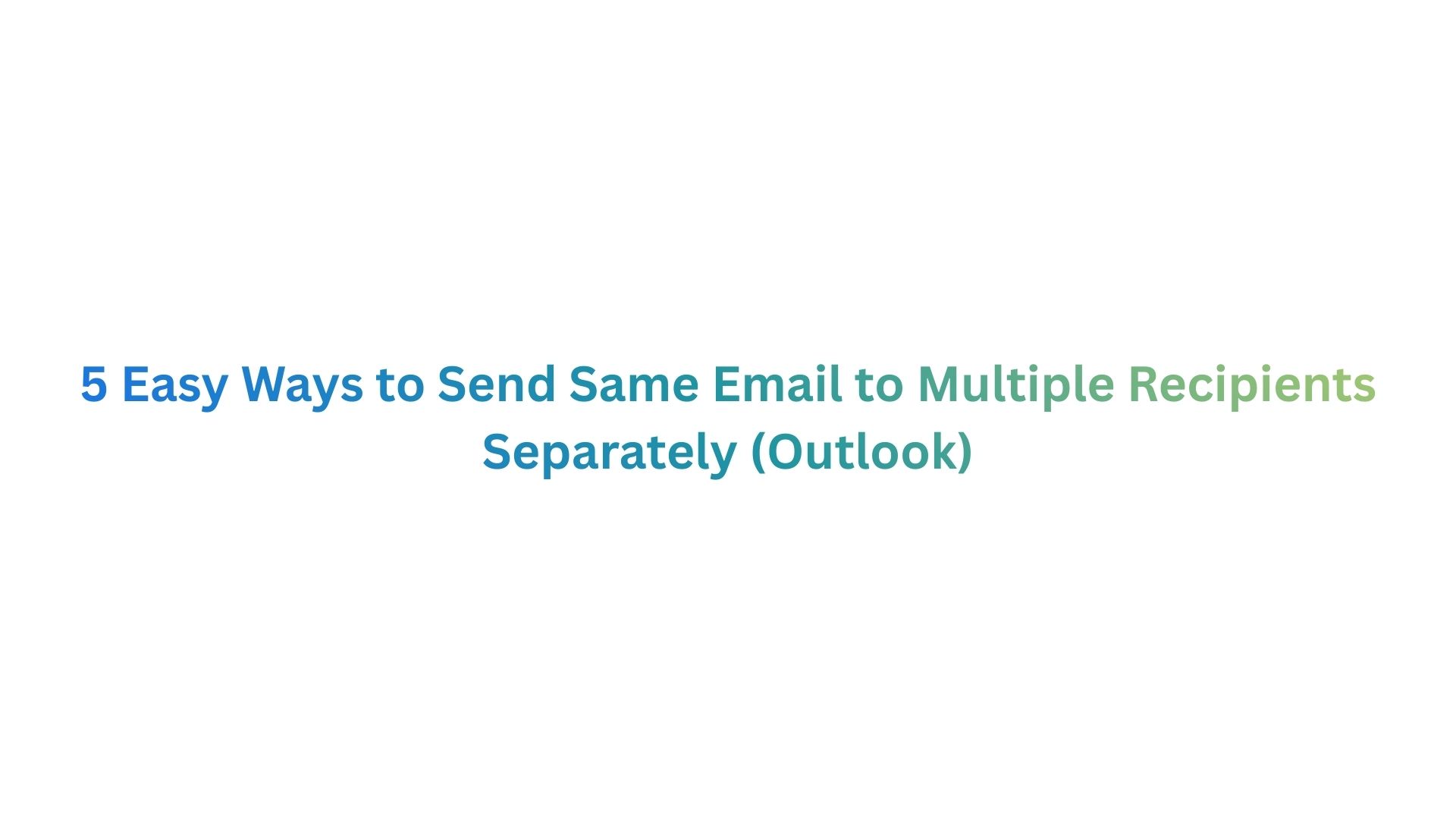Email bounces wreck deliverability and budgets for internet service providers. The fix is simple: use a free email checker before you hit send. Email lists decay fast—ZeroBounce’s 2025 study shows at least 25.74% of addresses go bad each year (roughly one in four).
To stay inbox-ready, you also need to keep spam complaints tiny; using an email verification service can help. Google recommends keeping your spam rate below 0.10% in Postmaster Tools.
In this guide, you’ll learn how verification works, including how to ensure a valid address the best free tools, and practical workflows to block bad data, cut bounce rates, and protect sender reputation.
What is an Email Checker?
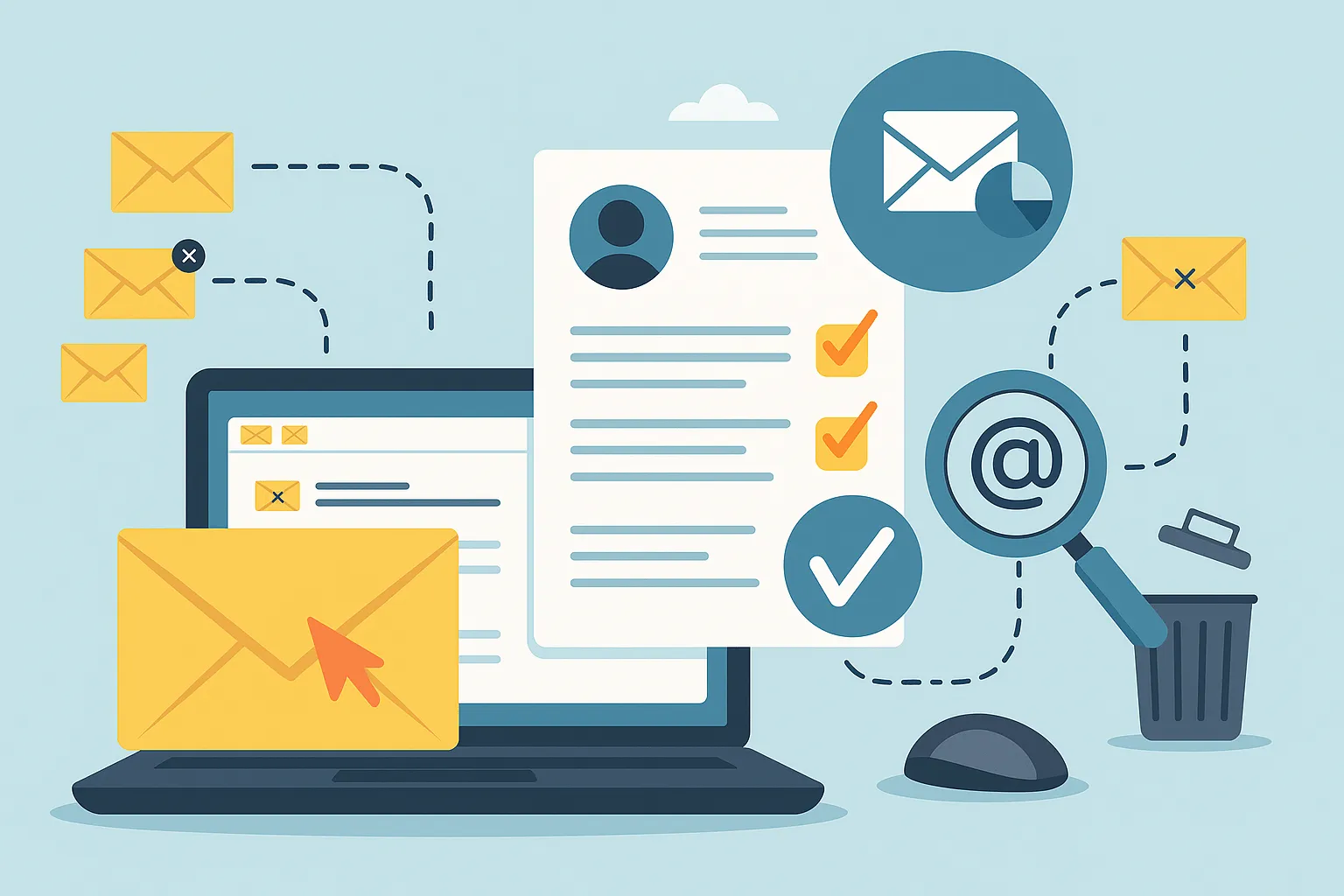
An email checker is a tool that helps you find out if an email address is real, fake, or risky—before you send anything. It checks if the email is typed correctly, if the domain exists, and if the mailbox can actually receive emails. Sounds techy? Don’t worry. Here’s why it matters for you.
Why It Matters for Email Deliverability & Sender Reputation
When you send emails to invalid addresses, it hurts your chances of landing in the inbox. Too many bounces? You might end up in the spam folder. That’s bad news for your business.
Here’s how a good free tool, specifically an email checker, helps you:
- Reduces bounce rates by spotting invalid email addresses and undeliverable addresses
- Protects your sender reputation by avoiding spam traps and risky emails
- Verifies multiple emails at once using CSV files or tools like Google Sheets
- Offers real time verification via email verification API for your sign up forms
- Helps ensure messages are delivered successfully to your intended recipient
As Google warns, a high bounce rate or too many spam complaints can get your domain flagged by email service providers.
“Validating emails before sending is not optional anymore—it’s essential for inbox success.” — Email Deliverability Report, 2025
How Email Verification Works (Step-by-Step)

- Syntax Check – The tool first checks if the email is written right. Example: johndoe@gmailcom (❌ invalid) vs johndoe@gmail.com (✅ valid). This step catches basic errors like missing @, extra dots, or bad characters in the email address.
- Domain & MX Records Check – Next, the checker looks at the domain—the part after “@”.
It asks: Does the domain exist? Can it receive emails? It checks MX records (Mail Exchange records), which show if the mail server is ready to accept emails. - Disposable & Role Email Detection – It flags disposable email addresses (like tempmail.com) used for spam or short-term use. It also detects role-based emails like info@ or support@, which don’t belong to a single person. These emails often cause invalid addresses or spam complaints.
- SMTP Server Handshake – The checker connects with the email's SMTP server. It asks, “Is this mailbox real?”—without sending an actual email message. This step helps confirm if the email address exists or is just a fake one.
- Catch-All Domain Detection – Some domains accept any email (like random@company.com). These are called catch-all domains. The tool marks these as “risky” because the email might not reach the intended recipient.
- Result Classification – After all checks, the email gets a status:
- Valid or deliverable address
- Invalid email address or undeliverable
- Risky emails (e.g., catch-all, disposable)
This helps you decide what to keep, suppress, or double-check.
- Avoids Bounces & Spam Traps – Verified emails lower your bounce rate and prevent landing in the spam folder. Cleaning lists also protects your email deliverability and keeps your domain reputation safe.
“Every $1 spent on email marketing returns $36—but only if your emails reach real people.” – DMA 2024 Report
- Bulk & Real-Time Options – You can verify multiple emails in bulk using tools like Google Sheets, CSV, or a free email checker tool. For sign up forms, use a real time verification API to block bad emails as they come in. Some platforms even let you simply upload your whole email list for fast checks.
Best Free Email Checker Tools (At-a-Glance Comparison)
Top Picks: The Free Email Checker Tool You Can Start With Today
1. ZeroBounce

ZeroBounce is a popular email verification tool used by email marketers, sales teams, and businesses of all sizes. It checks if an email address is valid, catches spam traps, and removes invalid email addresses before you send.
Key Features:
- 100 free email verifications per month with a free account
- Detects disposable email addresses, role-based accounts, and spam complaints
- Provides detailed result codes like valid, invalid, catch-all, and risky emails
- API access for real time verification on sign up forms
How to Use:
- Go to ZeroBounce.net
- Create a free account
- Simply upload your list or verify emails one-by-one
- Download your clean list with results like deliverable addresses and undeliverable addresses
“Marketers who clean their list with ZeroBounce see up to a 98% delivery rate.” — ZeroBounce 2024 Report
2. Emailable
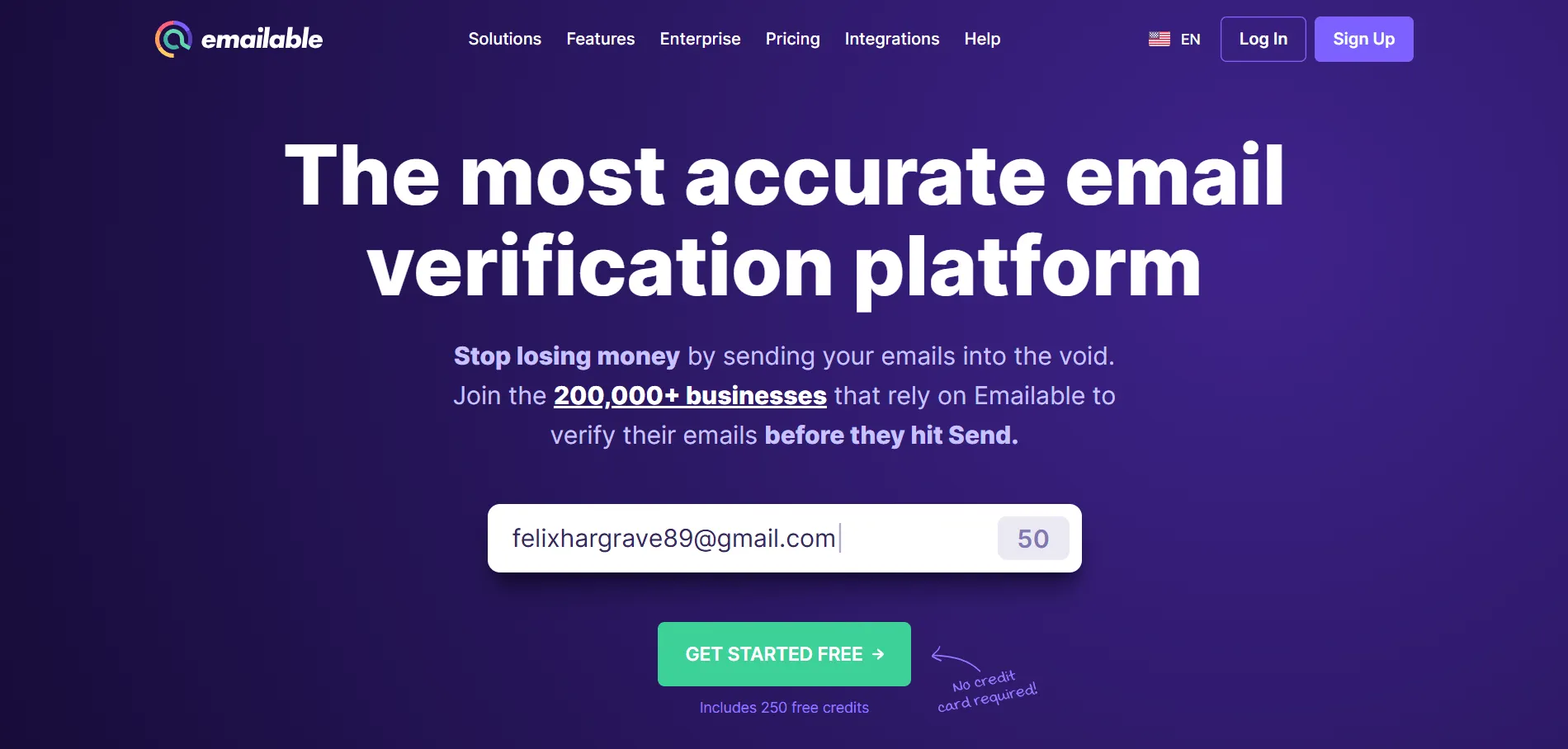
Emailable is another trusted email verifier that works well for both solo professionals and large teams, including those needing a free email address. It’s fast, affordable, and great for bulk jobs.
Key Features:
- 250 free email checker credits on sign-up
- Checks for syntax issues, missing mx records, and invalid mail server setups
- Flags invalid addresses, spam folder risks, and risky emails
- Syncs with tools like Google Sheets and major email service providers
How to Use:
- Visit Emailable.com
- Create your free account
- Upload your email list or connect directly to your mailing lists
- Get clean data ready for safe sending
According to Emailable, verified lists can reduce your bounce rate by up to 93%!
3. Kickbox
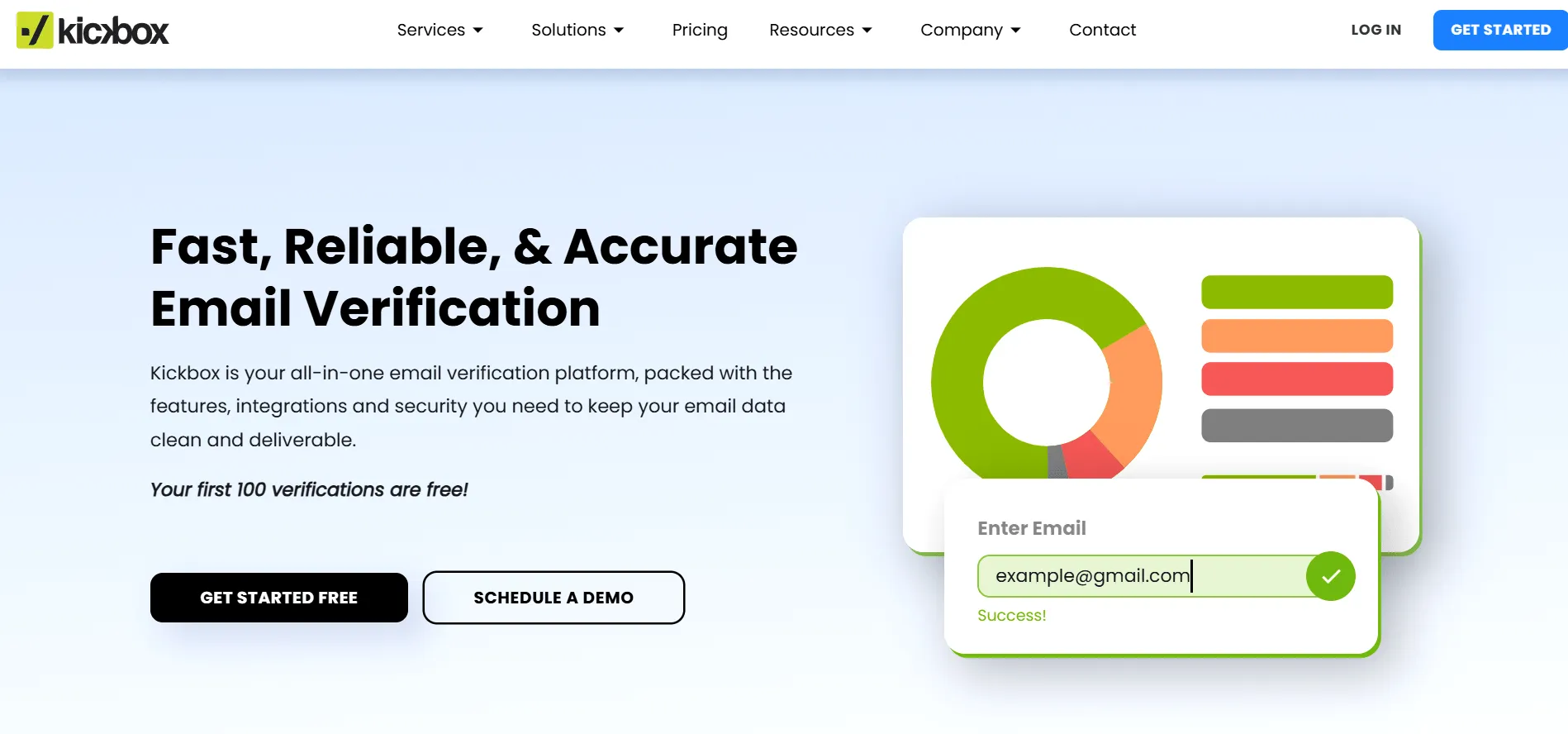
Kickbox is a simple yet powerful email verification tool. It helps you know if an email address is valid before you send. Whether you're sending newsletters or running full email campaigns, Kickbox ensures your emails reach real people.
Key Features:
- 100 free email verifications with a free account
- Checks for syntax errors, invalid addresses, and risky emails
- Confirms working mail server and detects disposable email addresses
- Integrates with tools like HubSpot, Mailchimp, and other email service providers
How to Use:
- Visit kickbox.com
- Sign up for a free account
- Upload your list or verify multiple emails in real-time
- Get clean data ready to send using your favorite marketing platform
“Kickbox has helped our bounce rates drop by 91%.” — Verified G2 Review, 2024
4. Hunter (Email Verifier)

Hunter is more than just an email checker—it’s also great for lead generation. Its email verifier helps you check if an email is deliverable before you hit send. It’s especially useful for B2B sales and cold outreach.
Key Features:
- 50 free verifications per month
- Works well for single checks and email validation service
- Flags spam complaints, invalid email addresses, and checks smtp server response
- Finds contacts by domain, then verifies them in real time
How to Use:
- Go to hunter.io
- Create a free profile
- Simply upload your email list or check one address at a time
- Review results like deliverable addresses, catch-all, or undeliverable addresses
“Hunter is our go-to tool for finding and verifying emails with confidence.” — Sales Manager, US-based SaaS Startup
5. MailerCheck
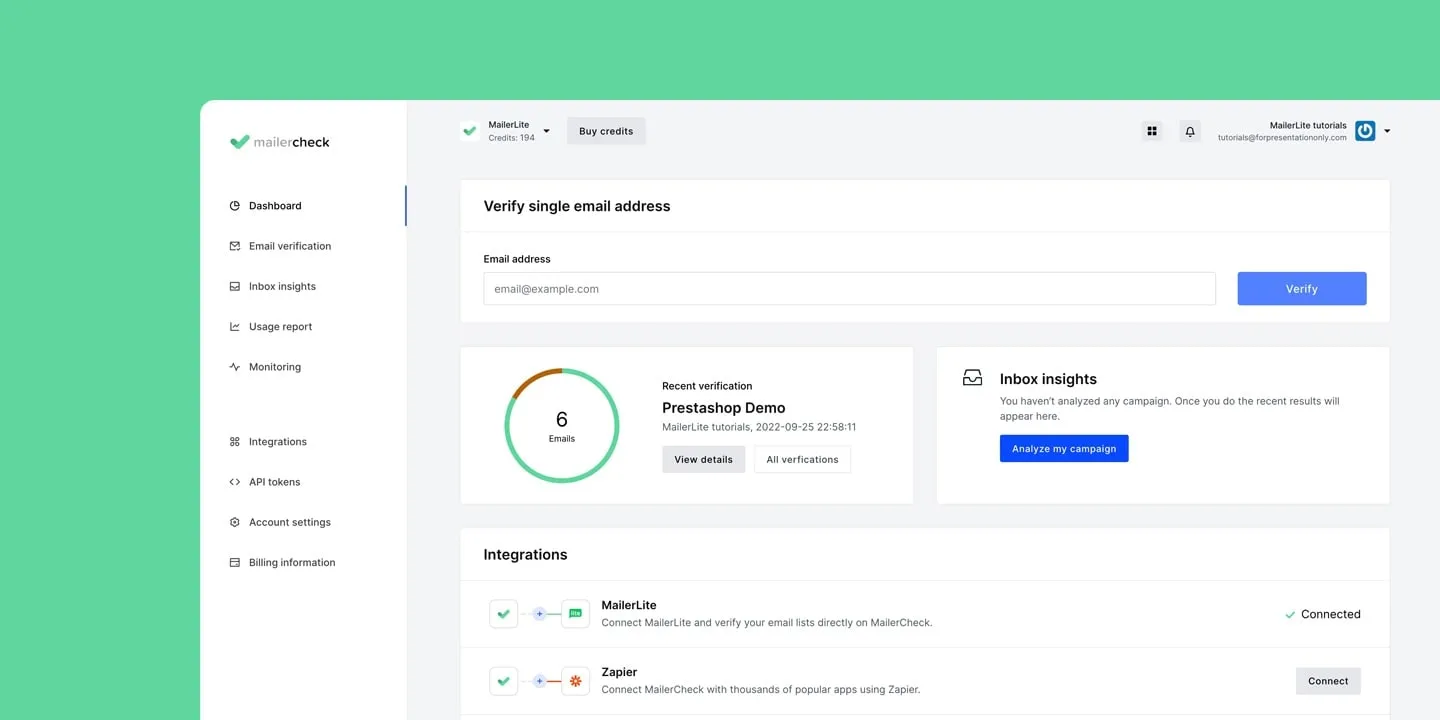
MailerCheck is an easy-to-use email verification tool built for marketers and small teams. It helps you find and remove risky emails, spam traps, and disposable email addresses before they ruin your sender reputation.
Key Features:
- 200 credits with a free account
- Detects invalid email addresses, syntax issues, and undeliverable addresses
- Checks if an email address exists using SMTP server verification
- Offers real-time API for sign up forms and bulk verification via Google Sheets
- Shows result labels like valid, unknown, or risky emails
How to Use:
- Go to mailercheck.com
- Sign up for a free email account
- Simply upload your email list or connect to your ESP
- Get results with data like domain status, mx records, and email message response checks
“MailerCheck cut our bounce rates by 84% in the first month.” — Agency user review, USA, 2024
6. Bouncer
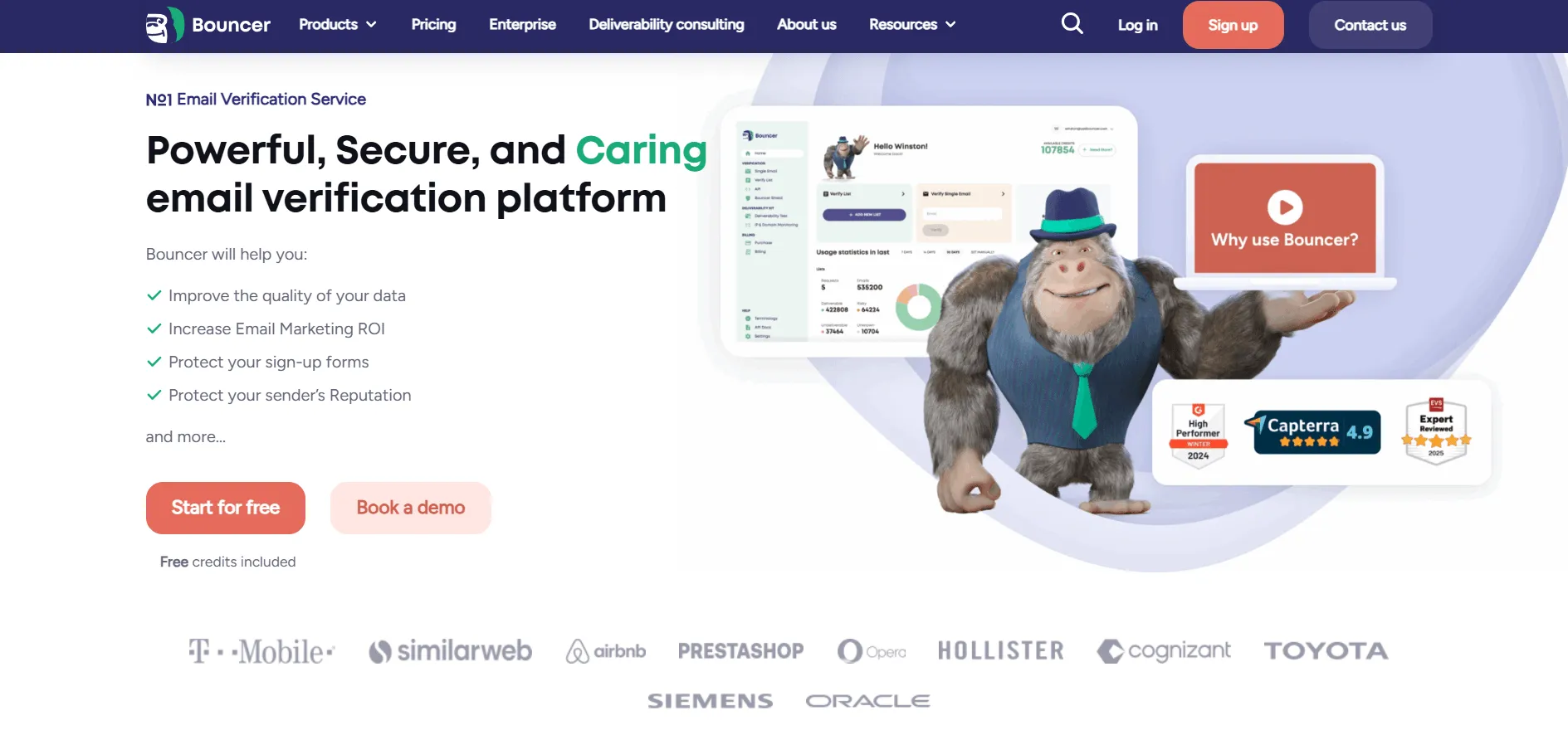
Bouncer is a privacy-first email checker that verifies both single and multiple emails. It focuses on accuracy, speed, and protecting your customer data.
Key Features:
- 100 free credits after sign-up
- Detects hard bounce, soft bounces, and email servers that reject fake addresses
- Fast bulk uploads with CSV, or real-time checks via email verification API
- Shows breakdown of email validity, deliverable addresses, and email address is valid logic
- Integrates with popular email service providers and marketing platforms
How to Use:
- Visit usebouncer.com
- Create a free account
- Verify multiple emails or test one using their free email checker tool
- Export clean, ready-to-send contacts marked by email validity and deliverable addresses
“Bouncer’s real-time API helped us stop bad email data at the point of entry.” — SaaS growth lead, Poland
How to Verify Email Addresses (Single & Bulk)
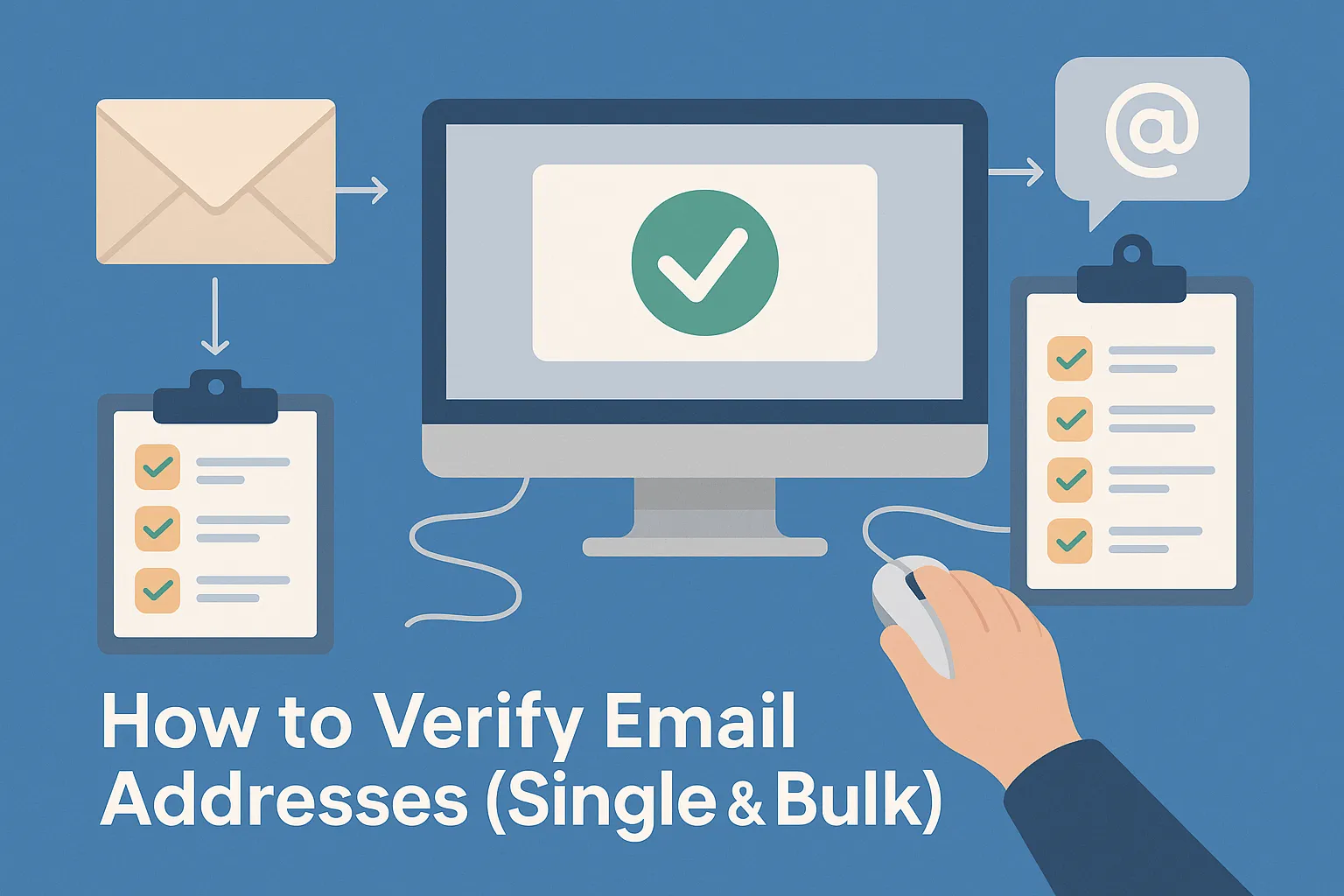
1. Single Check (Fast & Manual)
Just want to check if an email is valid quickly? Use a free email checker tool to confirm in seconds.
Here’s how it works:
- Go to a free email checker website like ZeroBounce or Hunter.
- Enter one email address into the field.
- Hit check. The email verifier will tell you if it’s valid, risky, or invalid.
“Most marketers never realize how a single invalid email address can tank their campaign’s success. One wrong send can lead to a hard bounce, spam flag, or a drop in sender score.” — EmailListVerify Support Team
Best for: Testing unknown addresses manually
Not great when you have multiple emails to review
2. Bulk Verification (CSV or Sheets)
Got a big email list? Don’t risk sending to undeliverable addresses. Use a bulk email verification tool to clean it in minutes.
Steps:
- Export your list (CSV or from Google Sheets)
- Upload it to a free email verifier that supports batch processing
- The tool runs email validation checks like:
- Format and syntax
- MX records (does the domain exist?)
- SMTP server handshake (can it receive?)
- Flags disposable email addresses or role-based emails
Tip: Some tools offer one credit per valid result, so only pay for good data.
Best for: Cleaning full lists before a marketing campaign and ensuring you have the actual email.
Some free plans have daily limits, so check your free account cap
3. Real-Time Gatekeeping (API)
Want to verify emails as users sign up? It's essential for maintaining healthy mailing lists. Plug in a real-time email verification API to stop spam, fake or disposable email addresses from even entering your CRM.
How it works:
- Connect an email verification API to your sign up forms
- As users enter their email addresses, the tool instantly checks:
- Is this a real mail server?
- Is it a valid email address?
- Is it likely to bounce or land in the spam folder?
Best for: SaaS signups, lead forms, and gated content
Bonus: Keeps your sender reputation safe from the start
4. Smart Rules for Results

Even if your email checker gives you a list of results, you still need to know what to do with them. Not every result is black or white. Here’s how to handle the gray areas:
- Valid: Safe to send.
- Invalid addresses: Remove immediately.
- Disposable email addresses: Don’t trust them. These are often used for one-time sign-ups.
- Catch-all domains: Risky. These accept all emails but might never be opened.
- Unknown: Could be a temporary issue with the mail server. Try again later.
“We recommend automatically rejecting disposable or role-based emails at sign up forms. It improves your email deliverability instantly,” says Tom Wozniak, Head of Marketing at OPTIZMO.
5. Feedback Loop to Your Stack
Your email verification tool shouldn't just stop at giving results. It should talk to your system.
- Sync clean data to your email marketing or CRM platform.
- Set rules to block known risky emails in real time.
- Send results back to Google Sheets or your database for tracking.
Look for email verifiers with API access so you can automate this.
Fact: Using an email verification API can help to verify an email, reducing your bounce rate by up to 90%, according to NeverBounce.
6. Ongoing Hygiene Cadence
Cleaning your email list isn’t a one-time job. You need a habit. Just like brushing your teeth.
- Verify email addresses every 30–60 days.
- Set up automatic scans for new sign ups.
- Re-check multiple emails before major campaigns.
- Use real-time blocking to stop invalid emails at the door.
Tip: Create a monthly checklist to verify an email batch or automate it via your email validation service.
Don’t wait for spam folders, bounces, or angry replies. Clean data = happy inbox.
7. Privacy & Compliance First
Protecting your users' data is a big deal. When using any email checker or email verification tool, you must follow privacy laws like GDPR and CAN-SPAM.
Here’s how to stay safe and compliant:
- Avoid sending emails to invalid addresses or disposable email addresses. It can damage your sender reputation.
- Choose tools that don’t store customer data without permission.
- Always verify that your email verifier uses secure mail servers and SMTP server connections.
- Make sure your tool checks email address is valid in real time verification — but never abuses user info.
By putting privacy first, you protect your email marketing efforts and improve email deliverability. You also gain trust with your intended recipients — and trust means more replies.
Selection Criteria for a Free Email Checker Tool
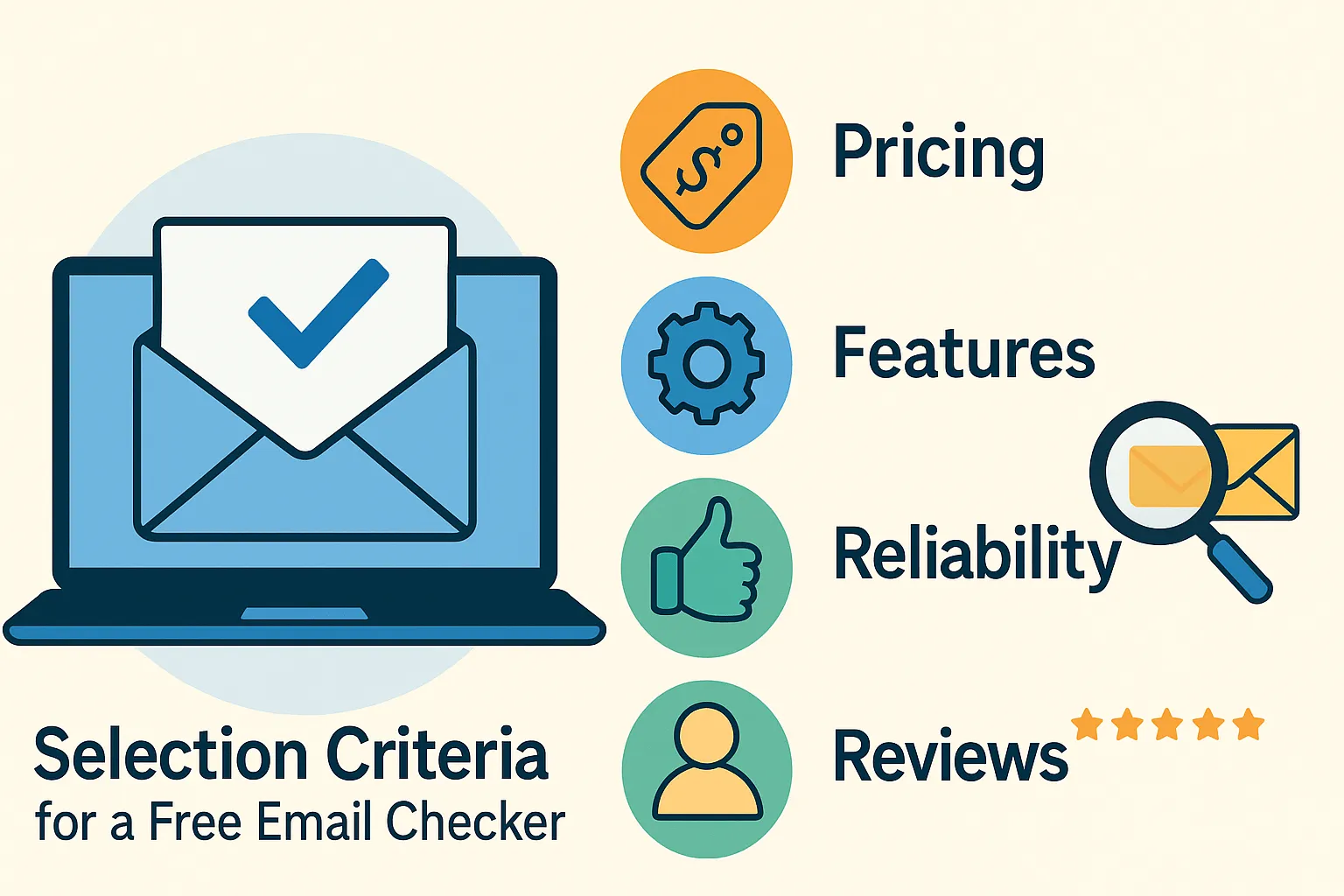
- Accuracy & Checks Performed: The best email checker tools don’t just check spelling. They run deep checks—like looking at MX records, doing a SMTP server handshake, and scanning for disposable email addresses. You need a tool that can tell if an email address is valid, risky, or fake. Look for checkers that spot role-based emails, spam traps, or catch-all domains.
- Free Tier That’s Usable: Let’s be real—some “free” tools only give you 1 or 2 checks before asking for payment. Look for a free email checker that actually lets you work. A good free account should allow you to verify multiple emails, see clear results, and explore key features.
- Single, Bulk, and Real-Time Options: Different jobs need different tools. Want to check one email address? That’s easy. But what if you need to clean 5,000 contacts? Choose an email verification tool that handles bulk uploads through CSV or Google Sheets. Also, check for real-time verification using an API—this stops bad sign-ups at the door and keeps your mailing list clean.
- Integrations & Workflow Fit: Your email checker should work with your current tools—like email marketing platforms, Google Sheets, or your CRM. It should be easy to plug into your flow, not disrupt it. Check if it offers API integration or connects with platforms like Mailchimp, HubSpot, or ActiveCampaign. A tool that fits into your process helps you automate hygiene and reduce undeliverable addresses without extra effort.
- Transparent Results & Reporting: You need more than just “valid” or “invalid.” A strong email verifier shows why something failed—whether it’s a hard bounce, a typo, or a disposable email address. It should flag risky results, like free email addresses or spam complaints. Clear reporting helps you make smart decisions before you hit send.
- Speed, Throughput & Reliability: Time matters. Especially when prepping for a major email campaign. Your free email checker tool should process quickly and accurately—whether you’re checking 10 or 10,000 emails. Look for tools with a strong mail server connection, fast processing time, and little to no downtime. A slow or buggy tool could delay your campaign or miss invalid emails entirely.
Disposable Email Address vs. Real User: Why it matters for sender reputation
How to Improve Email Deliverability: From Domain Setup to Inbox Placement
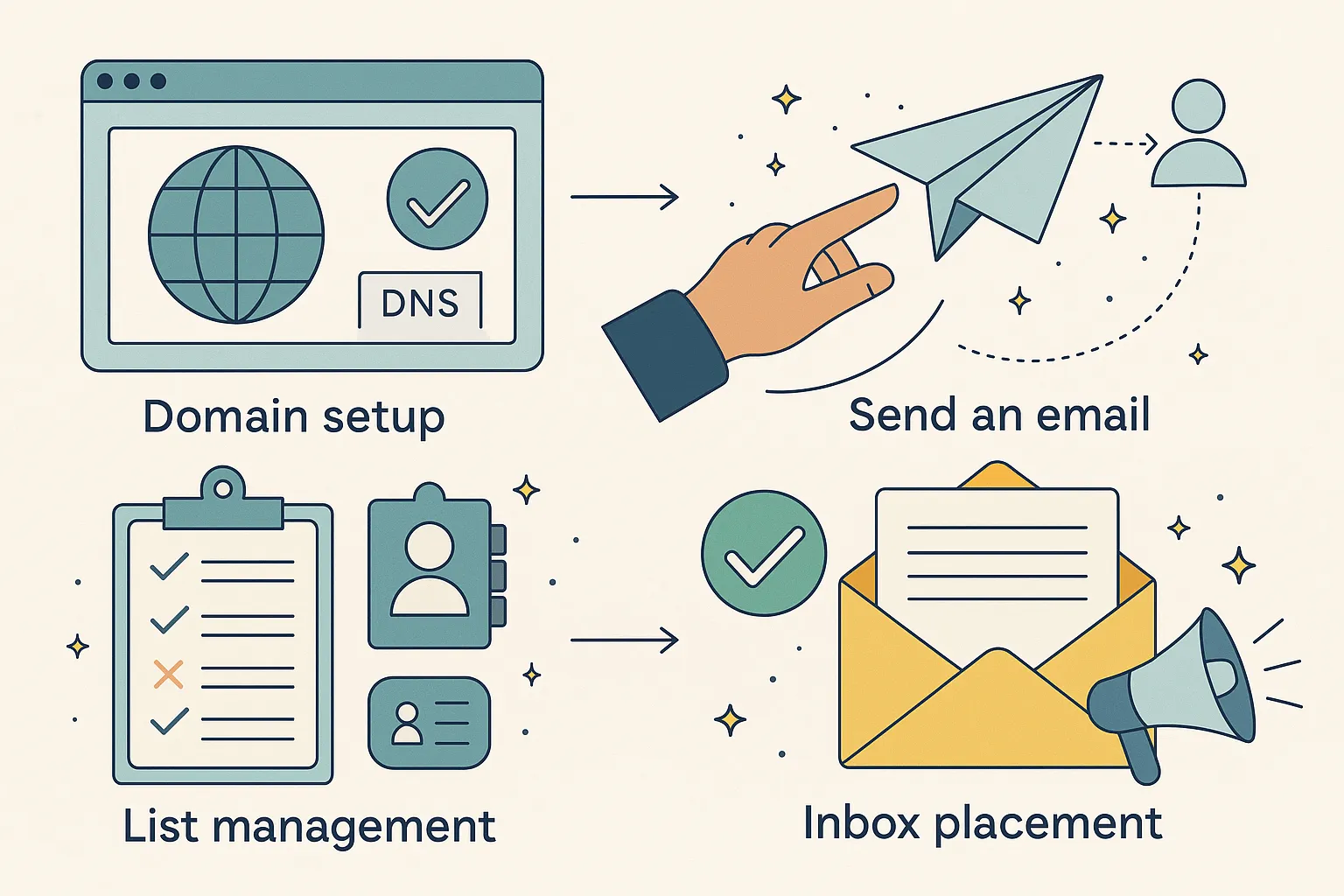
- Lock down domain authentication: Start with the basics. Your domain must be secure. Set up SPF, DKIM, and DMARC records. These are like ID cards for your emails. They prove your message is real and not fake. Without these, your email may go straight to the spam folder.
- Warm up and send consistently: Don’t send 5,000 emails on Day 1. That hurts your sender reputation. Slowly increase your volume. It’s like warming up your engine. Use tools that help manage smtp server performance. If your domain or mail server is new, start slow. Build trust with email service providers over time.
- Keep your lists clean at the source: Your list must include real people. Avoid any disposable email address or invalid email address. These will raise your bounce rate. Use a free email checker tool or email verifier. They remove undeliverable addresses and confirm if the email address exists.
- Protect sender reputation with engagement: Your job isn’t done after you hit send. Check if people open, click, or reply. This tells providers that your emails are wanted. Remove contacts who never open. Track your email deliverability with dashboards. That helps improve your domain’s reputation.
- Craft inbox-friendly messages: Avoid using spammy words like "FREE $$$" or "Buy now". These trigger spam filters. Keep subject lines short. Use valid email addresses in your sender field. Add your business details in the footer. Test before you send using an email tester or email checker.
- Monitor what providers see: Check how your emails look to email servers. Use tools that simulate how your emails are received by mail servers. Test with Gmail, Outlook, Yahoo, and others. Tools like MXToolbox help check your mx records and domain status.
- Automate pre-send checks and remediation: Use an email verification API that runs every time you add a new contact. It checks email validity in real time. Set rules to pause or block risky emails. Flag any risky emails or bad email data that could harm you. You can even verify multiple emails in bulk using Google Sheets plugins.
How to Reduce Bounce Rates Before You Send
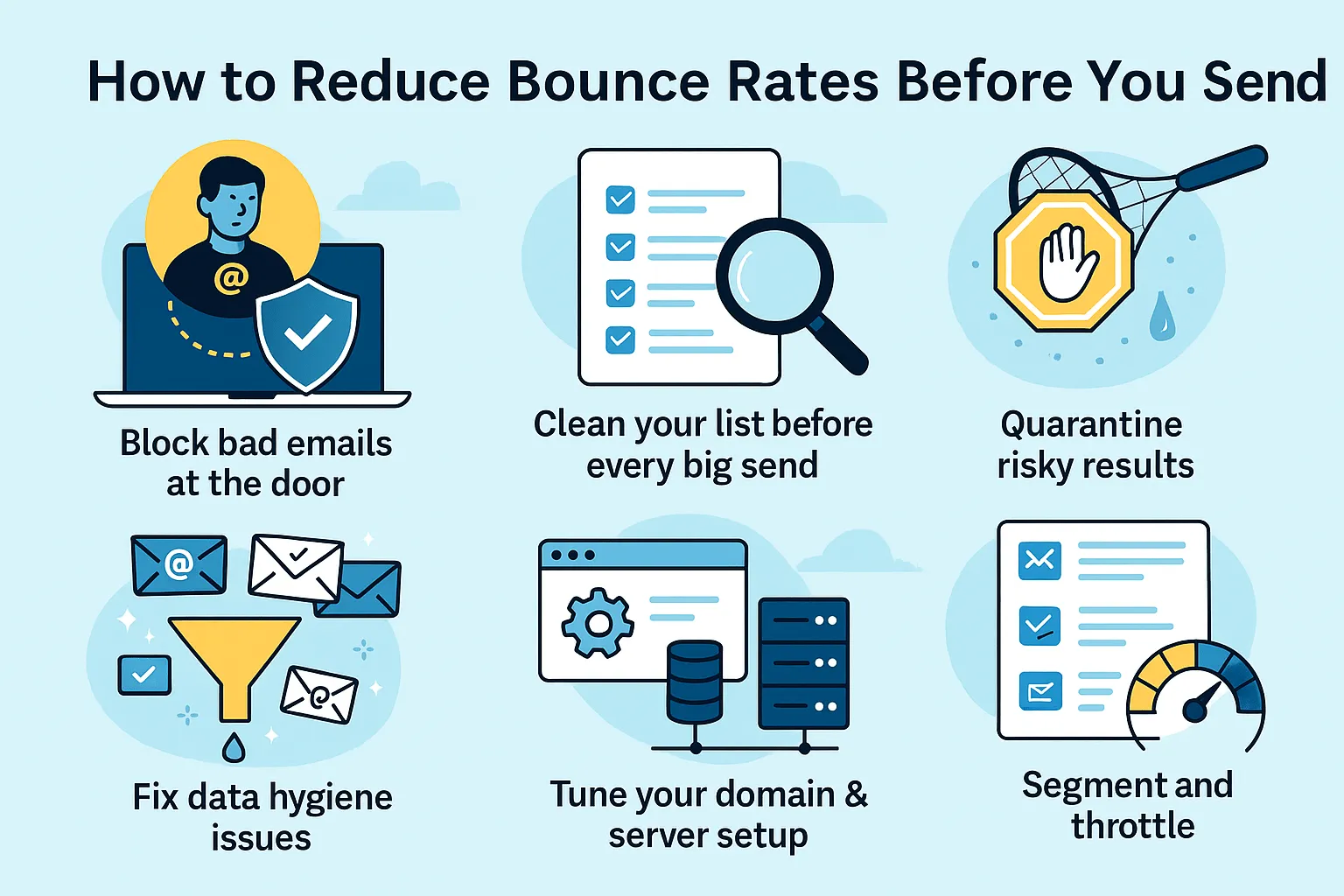
- Block bad emails at the door (real-time): Don’t wait until your email bounces. Stop bad emails the moment they enter your list. Use a real-time email checker or email verification API on your sign up forms. This checks if the email address is valid instantly. "Real-time verification can cut bounce rates by up to 70%" – Experian, 2024.
- Clean your list before every big send: Even good lists go bad. People change jobs. Domains shut down. Use an email verifier to find undeliverable addresses and risky emails. Check with a free email checker tool that confirms email validity and helps you keep your bounce rate low.
- Quarantine risky results: Not all emails are safe to send. Some pass checks but have a poor reputation or inactive status. Quarantine these risky addresses. Pause before you send. It protects your sender reputation and reduces spam complaints.
- Fix data hygiene issues: Messy data causes bounce rates to spike. Check for typos like “gamil.com” or “yaho.com.” Use tools that help you spot and fix bad email data. Run cleanup using google sheets add-ons or an email validation service.
- Tune your domain & server setup: Set up your domain, mx records, and smtp server correctly. Email providers look at this before accepting your message. According to Mailtrap, “Misconfigured domains are the top reason for high bounce rates in 2023.” Run a test with an email checker to spot setup errors.
- Segment and throttle: Don’t blast your entire list at once. Break it into groups. Send smaller batches. This is called throttling. It keeps your mail server happy and avoids triggering spam filters. You’ll also see better engagement.
- Test and monitor before launch: Always run a final test. Use an email tester to check how your email looks and whether it will land in the inbox. Track results. If bounce rates climb, pause and fix. Monitor using tools that track email deliverability, bounce rate, and delivered successfully stats.
Conclusion
Using an email checker isn’t optional anymore—it’s a must. Whether you're running a small business or a large campaign, you need to verify an email before you send. It helps you avoid sending to fake or invalid addresses, including disposable email addresses.
Start with a free email verifier. It’s easy, fast, and saves you time. Don’t forget to clean your mailing lists and check each free email address for errors.
Want better delivery? Use the right tools. That’s how you stay out of spam and reach your intended recipient.

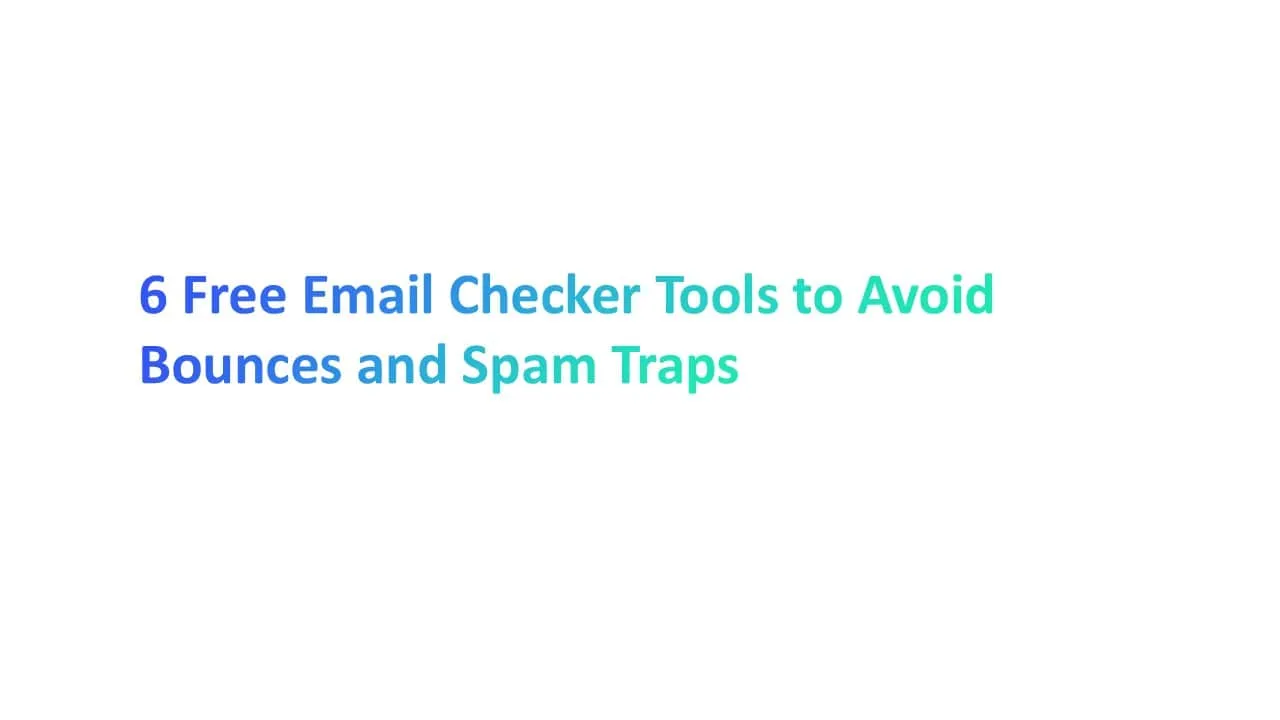



.jpg)

